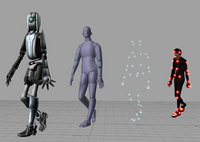
Photo from wikipedia
Purpose The Alberta Stroke Program Early Computed Tomography Score (ASPECTS) was designed for semi-quantitative assessment of early ischemic changes on non-contrast computed tomography (NCCT) for acute ischemic stroke (AIS). We… Click to show full abstract
Purpose The Alberta Stroke Program Early Computed Tomography Score (ASPECTS) was designed for semi-quantitative assessment of early ischemic changes on non-contrast computed tomography (NCCT) for acute ischemic stroke (AIS). We evaluated two automated ASPECTS software in comparison with reference standard. Methods NCCT of 276 AIS patients were retrospectively reviewed (March 2018–June 2020). A three-radiologist consensus for ASPECTS was used as reference standard. Imaging data from both baseline and follow-up were evaluated for reference standard. Automated ASPECTS were calculated from baseline NCCT with 1-mm and 5-mm slice thickness, respectively. Agreement between automated ASPECTS and reference standard was assessed using intra-class correlation coefficient (ICC). Correlation of automated ASPECTS with baseline stroke severity (NIHSS) and follow-up ASPECTS were evaluated using Spearman correlation analysis. Results In score-based analysis, automated ASPECTS calculated from 5-mm slice thickness images agreed well with reference standard (software A: ICC = 0.77; software B: ICC = 0.65). Bland–Altman analysis revealed that the mean differences between automated ASPECTS and reference standard were ≤ 0.6. In region-based analysis, automated ASPECTS derived from 5-mm slice thickness images by software A showed higher sensitivity (0.60 vs. 0.54), lower specificity (0.91 vs. 0.94), and higher AUC (0.76 vs. 0.74) than those using 1-mm slice thickness images (p < 0.05). Automated ASPECTS derived from 5-mm slice thickness images by software B showed higher sensitivity (0.56 vs. 0.51), higher specificity (0.87 vs. 0.81), higher accuracy (0.80 vs. 0.73), and higher AUC (0.71 vs. 0.66) than those using 1-mm slice thickness images (p < 0.05). Automated ASPECTS were significantly associated with baseline NIHSS and follow-up ASPECTS. Conclusion Automated ASPECTS showed good reliability and 5 mm was the optimal slice thickness.
Journal Title: Frontiers in Neurology
Year Published: 2023
Link to full text (if available)
Share on Social Media: Sign Up to like & get
recommendations!